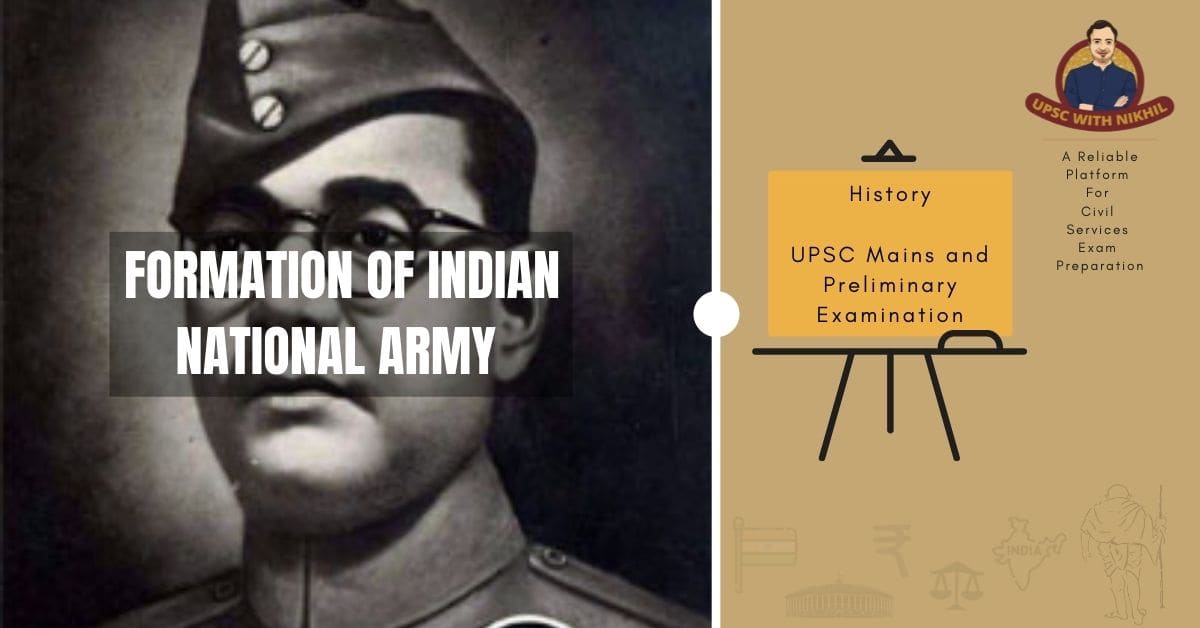Formation Of Indian National Army
When Mohan Singh, an Indian officer in the British Indian Army, decided not to join the retreating British army and instead sought assistance from the Japanese in Malaya, the INA was born. The Japanese had only encouraged civilian Indians to form anti-British organisations up to that point, but had no plans to form an Indian-led military wing.
• The Japanese handed over Indian POWs to Mohan Singh, who attempted to recruit them into the Indian National Army. The fall of Singapore was significant because it brought 45,000 Indian POWs into Mohan Singh's control.
• By the end of 1942, 40,000 men had expressed an interest in joining the INA. At various meetings of Indian community leaders and Indian Army officers, it was made clear that the INA would only act on the invitation of the Indian National Congress and the Indian people.
• Many saw the INA as a way to check Japanese misdeeds against Indians in Southeast Asia, as well as a bulwark against a future Japanese occupation of India.
• The INA was given a boost when the Quit India Movement erupted.
• In Malaya, anti-British demonstrations were held. With 16,300 men, the INA's first division was formed on September 1, 1942. Because they were planning an invasion of India, the Japanese were more receptive to the idea of an armed Indian wing.

• By December 1942, however, serious disagreements had arisen between the Indian army officers led by Mohan Singh and the Japanese over the INA's role. Mohan Singh and Niranjan Singh Gill, the INA's highest-ranking Indian officer, were detained. It turned out that the Japanese only wanted a token force of 2,000 men, whereas Mohan Singh wanted to raise a 20,000-strong Indian National Army.
Contribution of subhas Chandra bose
• The second phase of the INA began on July 2, 1943, when Subhas Chandra Bose was transported to Singapore by German and Japanese submarines.
• When he arrived in Tokyo, Prime Minister Tojo stated unequivocally that Japan had no territorial ambitions in India.
• On October 21, 1943, Bose returned to Singapore and established the Provisional Government of Free India.
• The Provisional Government then declared war on the United Kingdom and the United States, and the Axis powers and their satellites recognised it.
• Subhas Bose established two INA headquarters, one in Rangoon and the other in Singapore, and began reorganising the organisation.
• Civilians were recruited, funds were raised, and even a women's regiment known as the Rani Jhansi regiment was formed.
• ‘India's last war of independence has begun,' Subhas Bose said in an Azad Hind Radio broadcast addressed to Gandhiji on July 6, 1944.
The Japanese Army allowed one INA battalion, led by Shah Nawaz, to accompany them to the Indo-Burma front and participate in the Imphal campaign.
• However, the INA men were completely demoralised by their discriminatory treatment, which included being denied rations, arms, and being forced to do menial work for Japanese units. Any hopes of the INA liberating the country were dashed with the failure of the Imphal campaign and the subsequent Japanese retreat.
• The retreat began in mid-1944 and ended only with the final surrender to the British in South-East Asia in mid-1945. However, when the INA men were returned home and threatened with severe punishment, a powerful movement arose to defend them.


